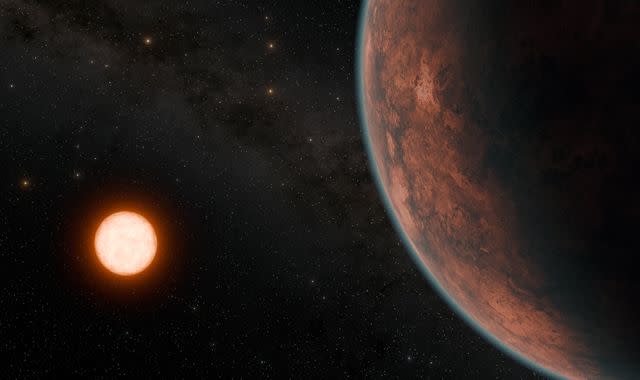New planet that could support human life discovered 'close' to Earth by UK scientists

UK scientists have discovered a new planet that could potentially support human life and it isn't that far away… relatively speaking.
The temperature on Gliese 12b is around 42C which means it could be liveable. In fact, it is one of the few known planets where humans could theoretically survive.
"It'd be uncomfortable for a human but the way we define 'habitability' is that liquid water could exist on the surface of the planet, which in this case it could," says Larissa Palethorpe from University of Edinburgh.
Ms Palethorpe and a team of scientists from around the world used NASA's Transiting Exoplanet Survey Satellite, known as TESS, to spot the planet orbiting around its star. It took them less than a year to then calculate its size, temperature and how it moves.
"Smaller planets are really hard to find," said Ms Palethorpe. "We want to know more about Earth-sized planets so we can understand how many other Earths are out there.
"Detecting one so nearby is really exciting because it allows us to do follow up analysis of the atmosphere, so we will be able to learn a lot more about it."
Gliese 12b is relatively close in space terms, at just 40 light years away. However, it'd take our fastest spaceship around 300,000 years to get there currently, according to Ms Palethorpe.
The planet, which is around the same size as Venus, orbits its sun every 12.8 days. The sun, called Gliese 12, is a cool red dwarf located in the constellation Pisces.
Read more from Sky News:
Huge new images of space revealed
Microsoft AI feature investigated over screenshots
"The light we are seeing now is from 40 years ago - that's how long it has taken to reach us here on Earth," said Warwick's Professor Thomas Wilson, who was involved in the discovery.
"Planets like Gliese 12b are few and far between, so for us to be able to examine one this closely and learn about its atmosphere and temperature is very rare."
The next step is for the team to examine the planet's atmosphere and find out whether it is similar to Earth's.
"It could actually be a planet with no atmosphere, which would mean it's not that habitable," said Ms Palethorpe.
"Ideally for habitability, you want a thin atmosphere - thick-atmosphere planets tend to be too hot. It could be cloud like, it could be hazy, or it could just be no atmosphere at all."

 Yahoo News
Yahoo News 
